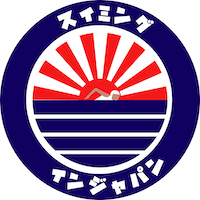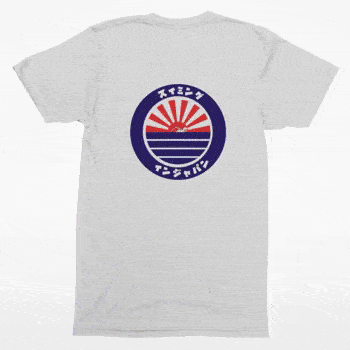Swimming pools in all countries have rules. As a child in Scotland I remember being bemused
by faded poolside cartooney images, with quaint and already ancient-sounding jargon like ‘no
petting’. Actually I can't remember any of the others.
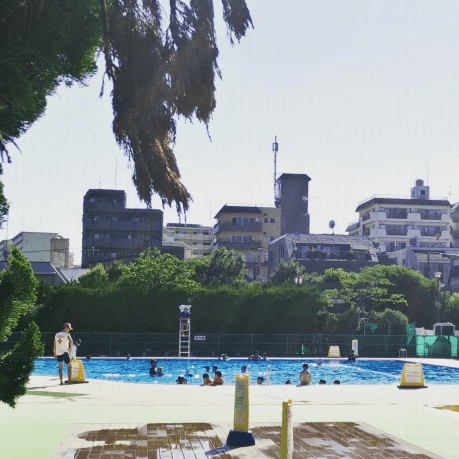
Fast forward a decade or two to life in Japan. Safe, well organised, so very convenient, with great public transport, beaches, onsen, rivers, mountains with world-class ski resorts … Japan has everything the outdoors enthusiast could ever want (plus some of the things you never knew you ever wanted … like heated toilet seats and chocolate ramen).
Swimming pools though are one of the many places here that can have inexplicable systems … even those with the calmest temperament can be reduced to oni (traditional Japanese demon) with steam coming out of their ears if caught unprepared!
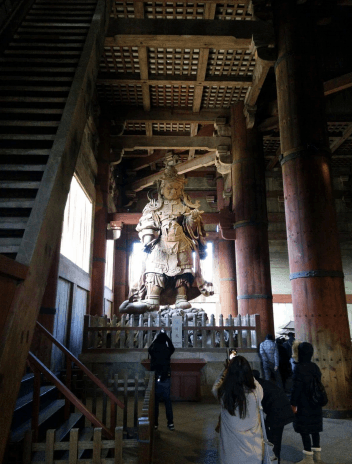
In order to try and keep misery to a minimum we thought it a good idea to compile a quick list of some of these rules to help save you too many run-ins with the “X” crossed arms of lifeguards.
Please bear in mind these guidelines apply to municipal pools, indoor and outdoor, plus most public waterparks. Fancy hotel pools will have their own rules.
Swimwear
Unlike France, men can wear their choice of beach-type shorts, speedos, mankini, wetsuit, whatever.
For women, again there are no rules, and you’ve a very flexible line up of choices. There are bikinis (especially at outdoor pools) and swimsuits as standard, but also a whole lot of other options too. At a Japanese swimming pool T shirts are common (this one is also true for men on sunny days), but more common still are purpose-designed outfits that cover most of the body, like this “under the sun” selection by Arena, for example. The hoody style is probably the most popular out of this range.
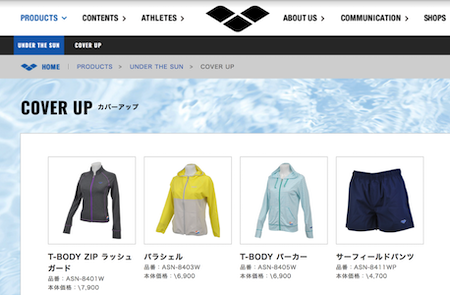
Basically, if in doubt, assume that it’s banned. That includes all accessories, jewellery, headphones - even those made for swimming - and watches. That will help you avoid any headaches. Japan has some strict No Tattoo rules at bathing spots. Some pools let you cover up your offending ink with a plaster and some don’t mind. You just need to test the water here, it seems to be a grey area. It’s because in the past body art was associated with the yakuza, though that perception is changing and rumour has it restrictions could be lifted in time for the 2020 Olympics
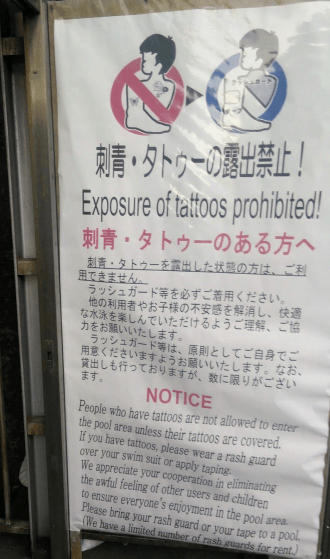
“We appreciate your cooperation in eliminating the awful feeling of other users and children to ensure everyone’s enjoyment in the pool area.” July, 2018. Jeez.
And caps: Indoor pool? Swimming cap essential. Outdoor? Maybe it’s OK to go without.
Don’t even try to take a young child still wearing nappies. No matter arguing that the technology is great so these expensive swimming diapers are leak-free, and besides your kid is basically toilet trained. Rules is rules.
Basically, if in doubt, assume that it’s banned. That includes all accessories, jewellery, headphones - even those made for swimming - and watches. That will help you avoid any headaches.
Poolside
The ‘No Cameras’ rule is a given, please do support it as this rule is there to prevent perverts. Smartphones are a grey area, though and some pools are more lenient.
At any outdoor spot, poolside patrol will be watching you like a hawk to check you are not applying sun cream, which is always banned, along with any other skin products and moisturisers. All shampoo, conditioner, and soap is banned from the showers, too. Government regulations stipulate that at regular intervals (some pools every hour, some longer) the whistle is blown, and everybody has to get out. It’s easy to spot the tourists or newcomers at this point: the lone swimmer having an embarrassing, flustered exchange with the “X”-ing lifeguards. It seems to always be a ten minute break, during which time the staff are trained to look militantly busy, each stationed in a different role. These include making announcements, taking measurements of the water, swimming the length of the pool to check for plasters and poos, and, my favourite part, hand signalling to one another in a synchronised, rigid robot dance. It gives you something to look at while you shiver. Some pools do have a hot sauna room to sit in while this happens. Most don’t.
Take a towel in with you for the wait ...
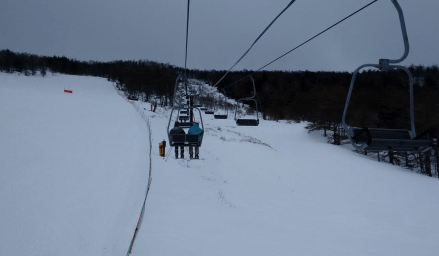
At any outdoor spot, poolside patrol may be watching you like a hawk to check you are not applying sun cream, which until summer 2018 was always banned, along with any other skin products and moisturisers. It seems this year that most places are more lenient, though be careful about being too blatant.
In the Water
Sadly all diving has a total blanket ban. Flip turns are often frowned at, too. Though, if the slower pace is more your thing then not to worry: there are often dedicated lanes for slowly pool-walking, which is very popular with all ages.
Kids armbands and other floatation devices may be forbidden, too. Usually you can assume they will be but you never know, all pools are slightly different. There might even be a special area for such things. If you’ve splashed out on some hand paddles, don’t go chasing waterfalls. Best keep them for the rivers and lakes that you’re used to. Banned.
Petting, for those in the mood, is not forbidden.
rules
